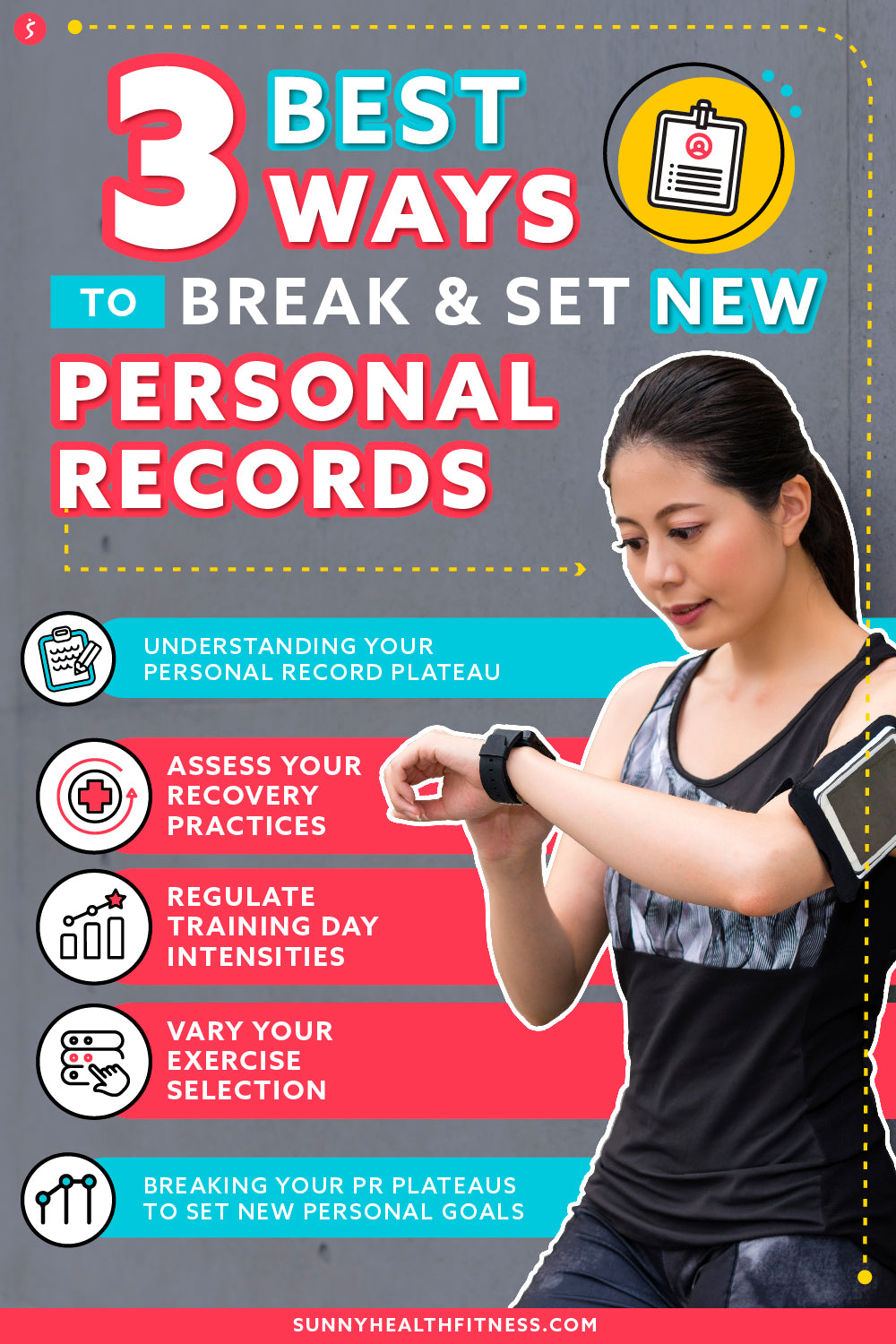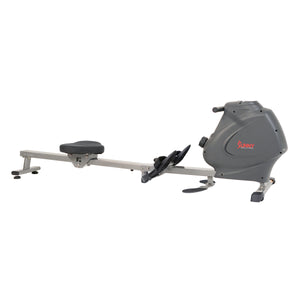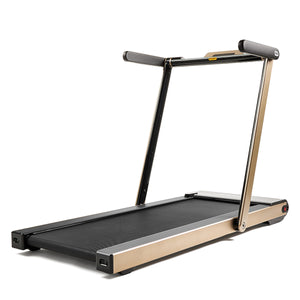Training can sometimes feel like a frustrating video game. You reach a certain level and become stuck on this level and can't figure out how to beat it. Training, unfortunately, does not have any cheat codes that give you the ability to skip the tricky part you are stuck at.
Getting stuck and showing no noticeable improvement is frustrating, so please allow me to introduce 3 of the best strategies to help you break and set new personal records more consistently and frequently.
You will have better successes at beating your personal record by assessing your recovery processes, regulating training intensity, and finally varying your exercises.
Understanding Your Personal Record Plateau
Our bodies look to sustain homeostasis, which is a scientific word for maintaining the norm. However, exercise acts as a stressor to our body and pulls us out of homeostasis — the workout challenges all of our tiny cells, muscles, organs, and mental toughness.
When the workout is the right amount of difficulty, the body adapts to be better suited to complete the following training. Likewise, continuing to train and recover properly will lead to physiological adaptation.
Early on in your training, personal records are improved pretty frequently when you start a new skill. For example, I recently started indoor cycling and have increased my average power output by over 50% in 3 months! It would be fantastic if it were this linear upward arrow that never dips.
Training isn't always a constant upward progression, though. Instead, it is familiar to have periods of little to no growth or progress, followed by smaller gains. Plateaus are commonplace in the training process. Recall, plateaus are times where no growth or improvement is seemingly made.
Plateaus are frustrating, so please allow me to introduce 3 of the best ways to break and set new personal records. When trying to make a change or improve, we frequently look to add something to our routine.
I want to propose an alternative and look to modify or enhance what you are already doing. Often we are on the right path to progress; we just need to recalibrate our approach.
Assess your Recovery Practices
Recovery and nutrition are the most overlooked pillars of training and yet just as important as the physical work itself. During stage 3 (non-REM & dreaming) sleep, the body repairs itself from the stressors of exercise by releasing growth hormones.
Growth hormone is responsible for the growth in muscle size and strength. Unfortunately, inadequate sleep caused by lack of sleep or frequent stress or alcohol use blocks our ability to enter the third stage of sleep to release this critical hormone.
Speaking of the quantity of sleep, 7-9 hours is the recommended amount of sleep. On more challenging training days, more sleep will only help in your recovery. Remember, your body repairs itself when you sleep.
Nutrition is the second cornerstone of your recovery that will help you break through plateaus. Fat loss? Muscle gain? A little bit of both? Food is the fuel that powers your body and plays a huge role in body composition.
For fat loss, look at these five food categories and see where you can reduce your consumption.
- Grains
- Diary
- Sweets/Dessert
- Added sugar
- Pre-packaged meals/food
Look at these three categories for muscle gain and see where you may not be eating enough to improve.
- Protein intake
- Carbohydrate intake
- Water consumption
Are you stuck with trying to lose more weight? Learn more strategies to help you overcome the weight loss plateau.
Regulate Training Day Intensities
The second most common way to break and set new personal records is to organize and regulate the intensities of your workouts. Many people are streaming or attending workout classes which is a fantastic way to be a part of a community and stay active.
My one hesitation with solely working out in group fitness classes is they generally always kick your butt. There are exceptions to this if you attend restorative and relaxation-focused classes, but group fitness aims to have you leaving class feeling like you worked hard and emptied the tank.
It is perfectly fine to get your butt kicked and leave full of sweat. However, consistently working to your max every class, 3+ times a week, is probably doing more harm than good.
Varying workout intensities between low, moderate, and high is essential for progress, whether it be for weight loss, muscle gain, cardio improvement, or anything in between. High-intensity training is just that, and working out that intensely does not give your body the time it needs to recover.
Recovering through rest days or lower intensity workouts allows you to come back refreshed and stronger for your next workout. I recommend no more than two high-intensity workouts per week for most people.
Here is more information about the science behind proper workout training to help you make better progress against your PR (personal record).
Vary Your Exercise Selection
Variety is the spice of life. There is substantial truth to this statement when used to refer to exercise programming.
- Can't improve your mile time?
- Are you stuck at a certain number of pullups?
- Do your hamstrings still feel wound up and tight?
We reach plateaus in our fitness journey for a variety of reasons. One way to break through these plateaus is to change the exercises you are performing. Exercises that utilize similar muscle groups but are inherently a different movement can benefit the exercise you are looking to improve.
This is because of a carryover effect. The carryover effect is when skill or performance improves due to exposure to a similar but different task.
An example is improving your bench press or the number of push-ups one can do. Have you ever felt stuck at a certain number? Moving away from this exercise for a few weeks and replacing it with an overhead press could be the change of pace your body needs.
An overhead press utilizes similar muscles (deltoids, triceps, part of your pecs) while moving the weight in a different direction (vertically vs. horizontally).
Another example is improving your mile time by taking a 1-2 week break from running and switching to biking, swimming, or another cardio activity. Constantly running to improve your mile time can get monotonous, and your body may need a different training stimulus to overcome your plateau.
Using similar muscles but training with a different locomotive pattern can be highly beneficial. Starting something new in fitness can often lead to quick progress and results initially. It may seem like every couple of days, you are outdoing what you did the last workout. It is an incredible feeling.
Breaking Your PR Plateaus to Set New Personal Goals
At some point, however, the PR's will slow, and you reach a standstill. Plateaus are frustrating and lead us to feel like we are stuck but are frequently part of the training process. However, you should not be discouraged.
Spend a short amount of time in a plateau first, investigate why your progress has stopped, then make the appropriate adjustments. Before looking to add anything, first adjust your recovery, intensities throughout the week, or exercise selection to break and set new personal records.
Reaching new personal records is an incredible feeling. Set your sights on a new PR, adjust your training and recovery, and enjoy the ride.

























Add Your Name & Email
Please enter your name and email to continue.We won’t display your email publicly.
1 comment
Getting on the fitness path is the first step. Finding out how to keep making progress is when the rubber meets the road. Thank you so much for sharing this